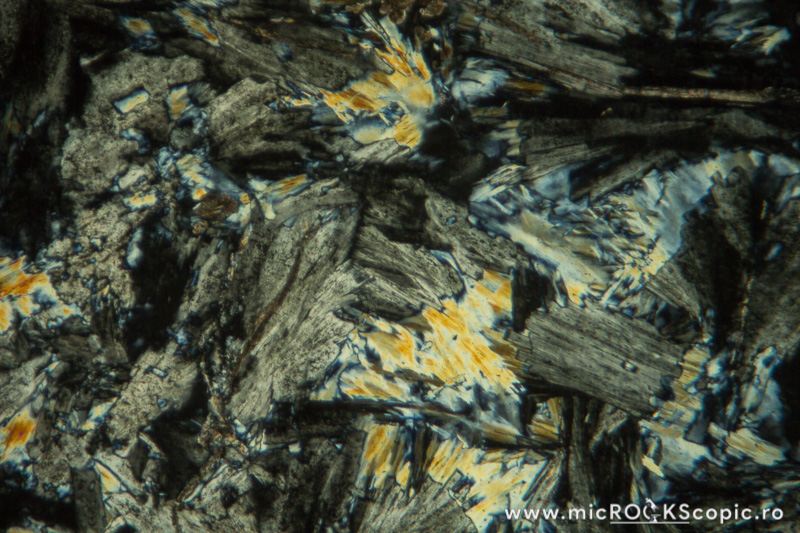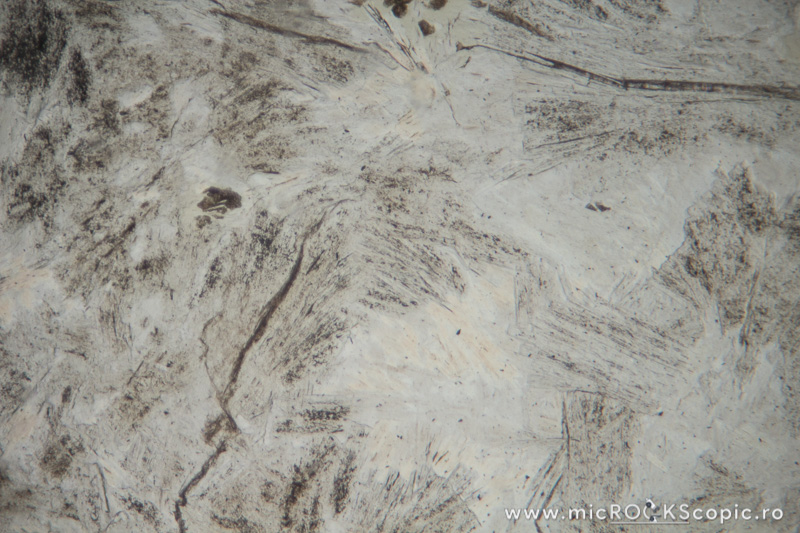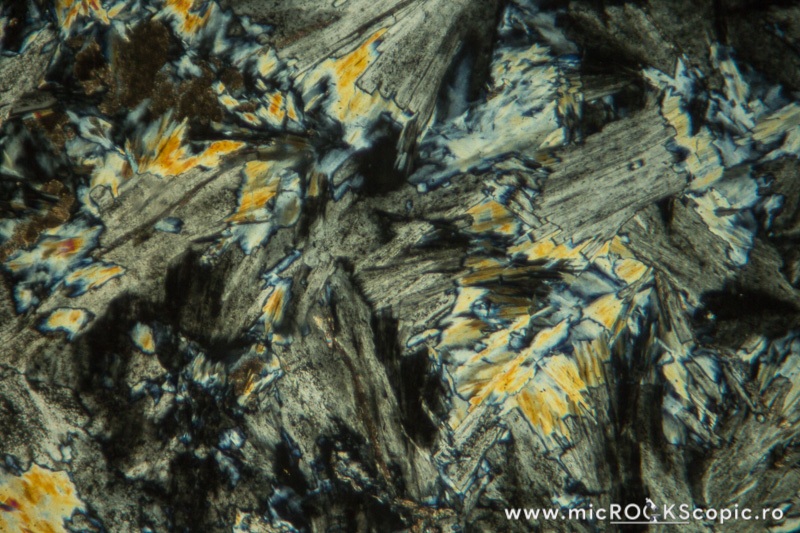About Brucite
For Archibald Bruce (1777-1818), American mineralogist, who first described the species.
Brucite hand-specimen
Formula: Mg(OH)2
System: Trigonal
Color: White, light greenish, etc.
Lustre: Vitreous, Waxy, Pearly
Hardness: 2½–3
Density: 2.39
System: Trigonal
Color: White, light greenish, etc.
Lustre: Vitreous, Waxy, Pearly
Hardness: 2½–3
Density: 2.39
Brucite PPL properties
Relief: Low – Moderate positive
Habit/Form: Brucite usually occurs as foliated or swirled masses and aggregates or as fibrous masses. Fibrous brucite is called hemalite or nemalite and is relatively uncommon. The folia are tabular parallel to {0001}; and the fibers are elongate at right angles to the c axis.
Color: Colorless
Pleochroism: –
Cleavage: Perfect in one direction {0001} but may not show in thin sections.
Habit/Form: Brucite usually occurs as foliated or swirled masses and aggregates or as fibrous masses. Fibrous brucite is called hemalite or nemalite and is relatively uncommon. The folia are tabular parallel to {0001}; and the fibers are elongate at right angles to the c axis.
Color: Colorless
Pleochroism: –
Cleavage: Perfect in one direction {0001} but may not show in thin sections.
Brucite XPL properties
Isotropy/Anisotropy: Anisotropic
Interference color: Order I; Some of the interference colors are anomalous; a pelicular reddish brown hue takes the place of the yellow and orange of the first order. If the section is too thin, the anomalous colors do not show.
Extinction angle: Parallel / 0° / straight to cleavages or fibers.
Twins: Absent
Uniaxial/Biaxial: Uniaxial (+) (anomalous Biaxial)
Optic axial angle (2V): –
Interference color: Order I; Some of the interference colors are anomalous; a pelicular reddish brown hue takes the place of the yellow and orange of the first order. If the section is too thin, the anomalous colors do not show.
Extinction angle: Parallel / 0° / straight to cleavages or fibers.
Twins: Absent
Uniaxial/Biaxial: Uniaxial (+) (anomalous Biaxial)
Optic axial angle (2V): –
Brucite distinguishing features under the microscope
Get Geology Toolkit Premium for more features of Brucite thin section under the microscope.
References
- Deer, W. A., Howie, R. A., & Zussman, J. (2013). An introduction to the rock-forming minerals (pp. 498). Mineralogical Society of Great Britain and Ireland, London.
- mindat.org – The Mineral Database





![[thumb]](http://microckscopic.ro/wp-content/uploads/brucite_1_01-150x150.jpg)
![[thumb]](http://microckscopic.ro/wp-content/uploads/brucite_1_06-150x150.jpg)






